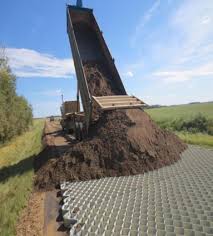Sustainable construction or Green methods aren’t just associated with happier tenants and improved health and productivity. They’re quickly proving their worth on a financial level. They have shown reduced operating costs and higher market values making them a sound investment for businesses and developers alike. We take a look at some of the latest developments in sustainable construction in Canada as the nation strives towards a greener economy.
In the news: All three of 2019’s Green Building Festival ‘Lifetime Achievement Award’ winners are women
For the first time in its history, this prestigious event had an all-female set of lifetime achievement award winners. The winners are:
Birgit Siber
– Principal at Diamond Schmitt Architects. Birgit’s accomplishments include spearheading EcoMetrics. It is a data and analysis tool for energy usage reduction. Moreover, it is the leading the installation of Canada’s first large-scale ‘living wall’ biofilter at the University of Guelph Humber.
Janna Levitt
– Co-founder at LGA Architectural Partners. Janna’s projects are known for their power to address both cultural and environmental considerations. She collaborates with diverse teams to create designs which are highly functional yet also ecologically sensitive.
Teresa Coady
– Former Chief Operating Officer of Kasian and President and CEO of Bunting Coady B+H. Teresa is known for her work creating new sustainability policies and practices with various agencies, and her first book, Rebuilding the Planet, The 12 Principles of Conscious Construction is set for release in 2020.
Green Infrastructure
Investment in green infrastructure:
As part of the Canadian government’s drive towards an ever greener economy, the Investing in Canada infrastructure plan sets aside over $180 billion, spread over 12 years. The plan includes funding for projects around social infrastructure, rural communities, trade and transportation – and green infrastructure.
Around $27 billion of this funding will go towards green infrastructure projects, with $5 billion available through the Canada Infrastructure Bank, and $2.2 billion assigned to green sustainable construction of infrastructure projects in Ontario.
Soil stabilization:
 While we normally think of sustainable construction in terms of buildings and the incorporation of renewable energy sources, sometimes it’s what’s going on underneath the surface that has the biggest impact! And while they’ve been a player in the construction of more sustainable roads and railways around the globe for some time now, and become increasingly popular for access road construction in Canada in particular, sometimes the conditions mean geocells are the only possible solution.
While we normally think of sustainable construction in terms of buildings and the incorporation of renewable energy sources, sometimes it’s what’s going on underneath the surface that has the biggest impact! And while they’ve been a player in the construction of more sustainable roads and railways around the globe for some time now, and become increasingly popular for access road construction in Canada in particular, sometimes the conditions mean geocells are the only possible solution.
MEG Energy’s Christina Lake complex in Alberta was one such project. Located on a muskeg peat bog with large areas covered in swamp, subzero temperatures in winter and heavy rains in summer made the construction of access roads for heavy vehicles and rigs a nightmare. Neoloy geocells turned out to be the only workable and durable solution – and as an added sustainability bonus, their use meant that local sand rather than imported materials could be used for infill and structural reinforcement, reducing the project’s carbon footprint.
In the news: Richmond elementary school named greenest in Canada
Since 2014, the Canada Green Building Council (CaGBC) and the Canada Coalition for Green Schools have been running an exciting annual competition to find the schools from kindergarten to grade 12 level which best embrace sustainability and find innovative ways to make their campuses greener, more resilient and healthier spaces.
This year’s winner, W. D. Ferris Elementary of Richmond, BC, tackled the task from several angles. Some of their initiatives and achievements included:
- A 95% reduction in food waste through traditional and vermicomposting
- Recycled 250,000 bottles and installed two water bottle refilling stations with the proceeds
- Hosting learn-to-bike clinics and encouraging staff and students to walk or cycle to school
- Reduced water, natural gas and electricity use
Second place went to the Career and Technology Centre at Central Memorial High School in Calgary, AB, for their community garden space; and third place to Westwood Community High School in Fort McMurray, AB, for their two greenhouses featuring an irrigation system run on solar power, as well as an aquaponics project aimed at improving air quality.
Plans underway for Canada’s first carbon negative building in Yellowknife
And finally, Yellowknife, capital city of the Northwest Territories, may soon become home to Canada’s greenest building of them all. The proposed four story building, a partnership between non-profit Ecology North and the Yellowknives Dene First Nation, would use technologies such as biomass boilers in conjunction with carbon emissions capture to become the country’s first carbon negative building – The Northern Centre for Sustainability.
The building’s main floor would house a coffee shop and public space, the second an innovation hub for climate action, the third offices for the two groups spearheading the project, and the final story residential units complete with a rooftop greenhouse. Integrated solar panels, water recycling, and use of local wood and building materials wherever possible are all part of the groups’ vision for the center.
Image source: https://www.flickr.com/photos/ulejko/41030560932











